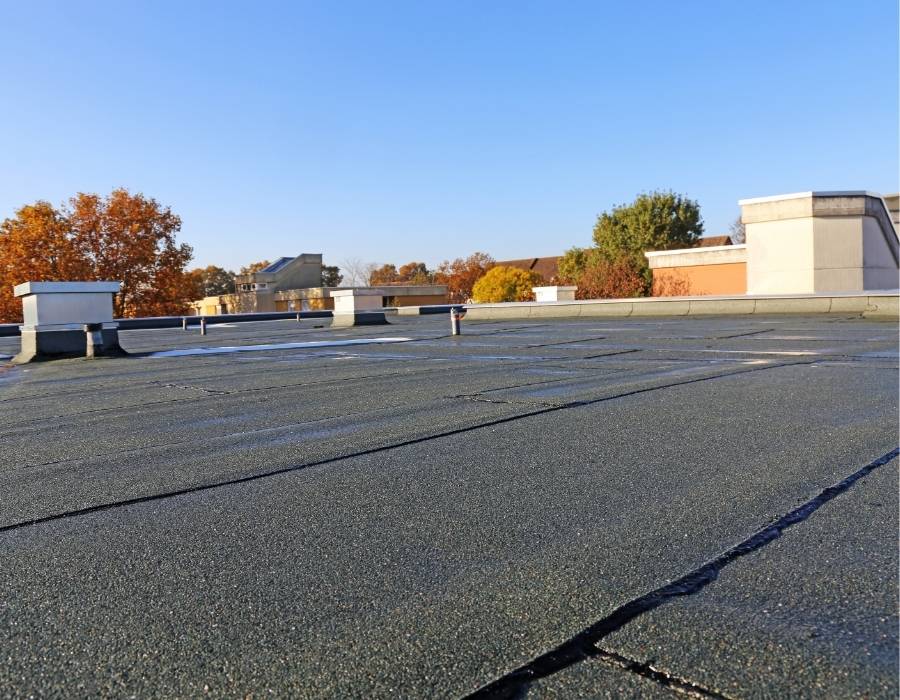Roof Access and Safety Planning for Commercial Buildings: What Owners Need to Know
When it comes to maintaining a commercial property, the roof is often out of sight—and unfortunately, out of mind. But it’s one of the most critical access areas on any commercial building. From HVAC inspections and solar panel installations to general maintenance, your rooftop sees more action than you might think.
Yet, with that access comes serious responsibility. According to OSHA, falls remain the leading cause of fatalities in the construction industry, and many of these incidents occur from roofs or elevated surfaces. As a commercial building owner, ensuring roof access safety isn’t just smart—it’s a legal and financial necessity.
Why Is Roof Access Safety Planning Important?
Roof access safety planning is a critical process that involves evaluating potential hazards, designing protective measures, and enforcing strict access protocols to ensure that only authorized and properly trained individuals can access a building’s rooftop. This planning isn’t just about precaution—it’s a legal and ethical responsibility. OSHA regulations mandate fall protection for workers operating at heights of 4 feet in general industry and 6 feet in construction, making compliance non-negotiable for any business. A well-structured safety plan ensures your organization meets these standards while fostering a culture of accountability and risk awareness.
Beyond regulatory compliance, effective roof safety planning plays a major role in injury prevention and liability reduction. Rooftops often present hidden dangers such as unstable surfaces, high winds, and unmarked edges—any of which can lead to serious or even fatal accidents. Just one incident can result in devastating physical harm and expose your business to lawsuits, regulatory fines, and insurance complications. Investing in proactive safety measures not only protects lives but also shields your company from the long-term financial and reputational costs of negligence.
Responsibility Starts at the Top
When it comes to rooftop safety, the ultimate responsibility lies with the building owner—even if outside contractors are brought in to perform the work. As the property owner or manager, you are legally and ethically accountable for providing a safe environment for anyone accessing the roof. This responsibility doesn’t shift just because someone else is doing the labor; it’s your role to make sure the conditions meet safety standards.
That means ensuring secure access points are in place, installing permanent safety features such as guardrails, ladders, and fall protection systems, and verifying that anyone working on the roof follows proper safety protocols. It also includes maintaining those safety features over time—regular inspections and upkeep are just as important as the initial installation. Taking these steps not only helps prevent accidents but also protects you from potential legal and financial consequences tied to unsafe working conditions.
Top Risks of Inadequate Roof Access Planning
Failing to plan for roof access safety can lead to serious and costly consequences. Without a clear access protocol, confusion and disorganization can quickly escalate into dangerous situations. Missing, damaged, or poorly maintained safety equipment—such as guardrails, ladders, or harness anchor points—puts workers at immediate risk. Allowing unauthorized or untrained personnel to access the roof only compounds the danger, especially when those individuals are unaware of existing hazards or safety procedures.
Another major risk is poor communication. If workers aren’t properly informed about rooftop dangers—such as skylights, trip hazards, or weather-related conditions—they’re more likely to experience accidents. Additionally, outdated or infrequent training can leave even experienced teams vulnerable to making avoidable mistakes. The consequences aren’t just physical; they’re financial too.
Best Practices for Roof Access Safety
1. Create a Roof Access Plan
Begin by developing a detailed roof access plan that outlines key elements such as designated access points, authorized personnel, emergency contacts, and clearly marked hazard zones. This document should be reviewed regularly, updated as needed, and kept in a visible, easily accessible location for maintenance staff and contractors. A well-structured plan acts as the foundation for all other safety protocols.
2. Install Permanent Safety Features
Permanent safety installations significantly reduce the risk of accidents compared to temporary or makeshift solutions. Equip your roof with essential features like OSHA-compliant guardrails, fixed safety ladders, designated walk paths, and secure access hatches. These fixtures provide consistent protection and eliminate the margin for human error that often comes with removable gear.
3. Train and Certify Employees and Contractors
Never allow anyone onto your roof without verifying proper training and certification in fall protection. Require up-to-date credentials and offer in-house safety briefings that cover your site’s unique risks, such as skylights, steep slopes, or electrical hazards. Ongoing education ensures both staff and third-party workers remain vigilant and compliant.
4. Implement an Access Control System
Controlling who gets on the roof is just as important as how they get there. Use access control methods like locked doors, key cards, or digital sign-in systems to monitor entry. Only individuals with a justified need and current safety training should be granted access, reducing the likelihood of unauthorized or unsafe activity.
5. Conduct Routine Audits and Drills
Consistency is key in maintaining rooftop safety. Schedule regular audits to assess compliance with safety standards and inspect the condition of installed equipment. In addition, hold periodic emergency drills to test evacuation routes, response times, and team coordination. These exercises can reveal gaps in your safety protocols and reinforce a culture of preparedness.
Closing the Gap on Rooftop Risk
While roof access might appear to be a small piece of the larger building management puzzle, it carries significant weight when it comes to safety, liability, and operational integrity. Overlooking rooftop safety can expose your business to serious hazards—but addressing it proactively opens the door to compliance, protection, and long-term peace of mind.
Begin by conducting a thorough safety audit to identify vulnerabilities. From there, install permanent safeguards, ensure your team is properly trained, and maintain clear documentation of your protocols. Roof access isn’t just a technical detail—it’s a reflection of your commitment to leadership, responsibility, and the well-being of everyone who sets foot on your property.

